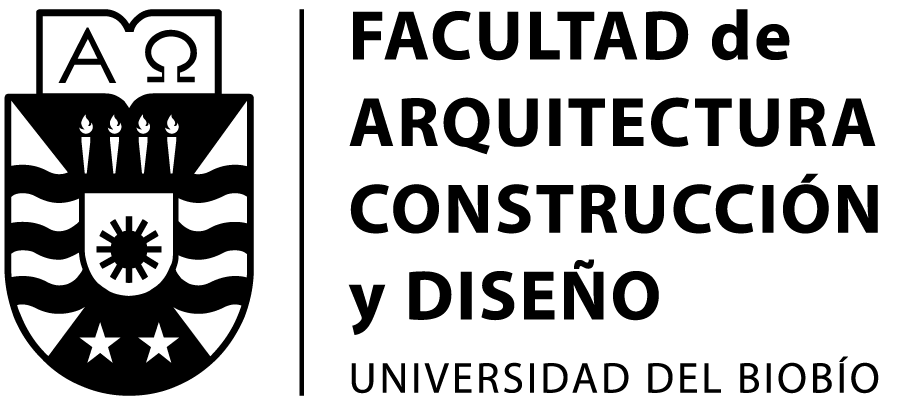Ecosystem vulnerability according to the land protection planning of the Community of Madrid
DOI:
https://doi.org/10.22320/07183607.2021.24.43.02Keywords:
sustainable development, ecology, environmental impact, environment, regional planningAbstract
Ecosystem Vulnerability according to Planning (VEP, in Spanish) seeks to value the role of ecosystem services for the
maintenance and strengthening of our cities through the identification of ecosystems, their valuation, and consideration from
planning itself. This research is a methodological adaptation of a European project that seeks to map ecosystems and the
pressures these receive, through a proposal from the European Environment Agency. Thanks to this, policies should be
established to reduce these pressures on the natural environment or to avoid exceeding critical levels with resulting changes in
its level of resilience. The consideration of planning as another pressure factor means seeing a new risk for these ecosystems
that, although it had not been contemplated until now, is greatly relevant in our context. In this sense, it is necessary to increase
the scale of work and to have the growth forecasts and existing land protections, whose information at an international level
would be very difficult to homogenize and obtain. Thus, this methodological proposal focuses specifically on the Community of
Madrid, Spain, to identify the pressures contemplated by the European methodology, and to add a new variable that alters the
risk of losing these spaces. The case study poses important challenges due to the high urban pressure there is, but exemplifies
the problems of ecosystems in the area analyzed, identifying the spaces with less joint resilience on facing these changes, due to
their predisposition to urbanization.
Downloads
References
Artmann, M. (2014). Institutional efficiency of urban soil sealing management - From raising awareness to better implementation of sustainable development in Germany. Landscape and Urban Planning, 131, 83-95. DOI: https://doi. org/10.1016/j.landurbplan.2014.07.015
Córdoba Hernández, R. y Garciá-Burgos Pérez, A. (2020). Urbanización inclusiva y resiliente en asentamientos informales Ejemplificación en Latinoamérica y Caribe. Bitacora Urbano Territorial, 30(2), 61-74. Universidad Nacional de Colombia. DOI: https://doi.org/10.15446/BITACORA.V30N2.81767
Córdoba Hernández, R. y Morcillo Álvarez, D. (2020). Territorial frame of space production in the functional region of Madrid. Ciudades, 23, 71-93. DOI: https:// doi.org/10.24197/CIUDADES.23.2020.71-93
European Commission (2013). Vivir bien, respetando los límites de nuestro planeta. VII PMA – Programa General de Acción de la Unión en materia de Medio Ambiente hasta 2020. Recuperado de http://europa.eu/legislation_summaries/ consumers/consumer_safety/l32042_es.htm
European Environment Agency (2017). Climate change adaptation and disaster risk reduction in Europe. Enhancing coherence of the knowledge base, policies and practices. EEA Report, (15). Recuperado de https://www.eea. europa.eu/publications/climate-change-adaptation-and-disaster
Everard, M., Johnston, P., Santillo, D. y Staddon, C. (2020). The role of ecosystems in mitigation and management of Covid-19 and other zoonoses. Environmental Science and Policy, 111, 7-17. DOI: https://doi.org/10.1016/j.envsci.2020.05.017
Fernández Durán, R. y González Reyes, L. (2014). En la espiral de la energía. Libros en Acción/Baladre. Recuperado de https://www.ecologistasenaccion. org/29055/libro-en-la-espiral-de-la-energia/
Gardi, C., Panagos, P., Van Liedekerke, M., Bosco, C. y De Brogniez, D. (2015). Land take and food security: assessment of land take on the agricultural production in Europe. Journal of Environmental Planning and Management, 58(5), 898-912. DOI: https://doi.org/10.1080/09640568.2014.899490
Ghaley, B. B., Vesterdal, L. y Porter, J. R. (2014). Quantification and valuation of ecosystem services in diverse production systems for informed decision-making. Environmental Science and Policy, 39, 139-149. DOI: https://doi. org/10.1016/j.envsci.2013.08.004
Gómez-Baggethun, E. y Barton, D. N. (2013). Classifying and valuing ecosystem services for urban planning. Ecological Economics, 86, 235-245. DOI: https://doi. org/10.1016/j.ecolecon.2012.08.019
Guerry, A. D., Polasky, S., Lubchenco, J., Chaplin-Kramer, R., Daily, G. C., Griffin, R., … y Vira, B. (2015). Natural capital and ecosystem services informing decisions: From promise to practice. Proceedings of the National Academy of Sciences of the United States of America, 112(24), 7348-7355. DOI: https://doi.org/10.1073/ pnas.1503751112
Haase, D., Larondelle, N., Andersson, E., Artmann, M., Borgström, S., Breuste, J., … y Elmqvist, T. (2014). A quantitative review of urban ecosystem service assessments: Concepts, models, and implementation. Ambio, 43(4), 413-433. DOI: https://doi.org/10.1007/s13280-014-0504-0
Haines-Young, R. y Potschin, M. (2012). The links between biodiversity, ecosystem services and human well-being. En Raffaelli, D. G. y Frid, C. L. J. (Eds.), Ecosystem Ecology (pp. 110-139). Cambridge University Press. DOI: https://doi.org/10.1017/cbo9780511750458.007
Harrison, P. A., Berry, P. M., Simpson, G., Haslett, J. R., Blicharska, M., Bucur, M., ... y Turkelboom, F. (2014). Linkages between biodiversity attributes and ecosystem services: A systematic review. Ecosystem Services, 9, 191-203. DOI: https://doi.org/10.1016/j.ecoser.2014.05.006
Hassan, R. (2005). Ecosystems and Human Well-being: Current State and Trends. Millennium Ecosystem Assessment. Recuperado de https://www. millenniumassessment.org/en/Condition.html#download
Hernández Aja, A. Aparicio Mourelo, Á., Gómez García, M. V., González García, I., Córdoba Hernández, R., Díez Bermejo, A., ... y Picardo Costales, L. (2020). Resiliencia funcional de las áreas urbanas. El caso del Área Urbana de Madrid. Madrid: Instituto Juan de Herrera. Recuperado de http://oa.upm.es/63377/
HIC-AL/Grupo de trabajo de PSH. (2017). Utopías en construcción. Experiencias latinoamericanas de producción social del hábitat. HIC-AL. http://autogestao. unmp.org.br/artigos-e-teses/utopias-en-construccion-experiencias-latinoamericanas-de-produccion-social-del-habitat/
Huemann, M., Schueler, G., Mueller, C., Schneider, R., Johst, M. y Caspari (2011). Identification of runoff processes - The impact of different forest types and soil properties on runoff formation and floods. Journal of Hydrology, 409(3-4), 637-649. DOI: https://doi.org/10.1016/j.jhydrol.2011.08.067
Hurlimann, A. C. y March, A. P. (2012). The role of spatial planning in adapting to climate change. En Wiley Interdisciplinary Reviews: Climate Change, 3(5), 477- 488. DOI: https://doi.org/10.1002/wcc.183
Koukoui, N., Gersonius, B., Schot, P. P. y Van Herk, S. (2015). Adaptation tipping points and opportunities for urban flood risk management. Journal of water and climate change, 6(4), 695-710. DOI: https://doi.org/10.2166/wcc.2015.093
Kumar, P. (Ed.) (2012). The Economics of Ecosystems and Biodiversity: Ecological and Economic Foundations. Londres: Routledge Taylor and Francis Group. DOI: https://doi.org/10.4324/9781849775489
Linney, G. N., Henrys, P. A., Blackburn, G. A., Maskell, L. C. y Harrison, P. A. (2020). A visualization platform to analyze contextual links between natural capital and ecosystem services. Ecosystem Services, 45. DOI: https://doi.org/10.1016/j. ecoser.2020.101189
Maes, J. Teller, A., Erhard, M., Liquete, C., Braat, L., Berry, P., … y Hauck, J. (2013). An analytical framework for ecosystem assessments under action 5 of the EU biodiversity strategy to 2020. Luxemburgo: European Environment Agency’ / Publications office of the European Union. DOI: https://doi.org/10.2779/12398
Maes, J., Teller, A., Erhard, M., Murphy, P., Paracchini, M. L., Barredo, J. I., …, y Lavalle, C. (2014). Mapping and Assessment of Ecosystems and their Services. Indicators for ecosystem assessments under Action 5 of the EU Biodiversity Strategy to 2020. Recuperado de https://ec.europa.eu/environment/nature/ knowledge/ecosystem_assessment/pdf/2ndMAESWorkingPaper.pdf
Mcgranahan, G., Balk, D. y Anderson, B. (2007). The rising tide: Assessing the risks of climate change and human settlements in low elevation coastal zones. Environment and Urbanization, 19(1), 17-37. DOI: https://doi. org/10.1177/0956247807076960
Mcgrane, S. J. (2016). Impacts of urbanisation on hydrological and water quality dynamics, and urban water management: a review. Hydrological Sciences Journal, 61(13), 2295-2311. DOI: https://doi.org/10.1080/02626667.201 5.1128084
Meerow, S., Newell, J. P. y Stults, M. (2016). Defining urban resilience: A review. En Landscape and Urban Planning, 147, 38-49. DOI: https://doi.org/10.1016/j. landurbplan.2015.11.011
Millennium Ecosystem Assessment (2004). Ecosystems and human well-being: a framework for assessment. Choice Reviews Online, 41(08), 41-4645-41- 4645. DOI: https://doi.org/10.5860/choice.41-4645
Ministerio para la transición ecológica y el reto demográfico. (2020). Estrategia nacional de infraestructura verde y de la conectividad y restauración ecológicas. Recuperado de https://www.miteco.gob.es/images/es/borradoreeivcre_ infopublica_tcm30-497133.PDF
Oyedeji, K. (2017). Natural disasters. Virginia Quarterly Review, 93(1), 159-166. DOI: https://ourworldindata.org/natural-disaster
Rigaud, K. K., de Sherbinin, A., Jones, B., Bergmann, J., Clement, V., Ober, K., ... y Midgley, A. (2018). Groundswell : preparing for internal climate migration (Vol. 2) : Main report. International Bank for Reconstruction and Development / The World Bank. DOI: https://doi.org/doi.org/10.7916/D8Z33FNS
Sala, O. E., Chapin, F. S., Armesto, J. J., Berlow, E., Bloomfield, J., Dirzo, R., ... y Wall, D. H. (2000). Global biodiversity scenarios for the year 2100. Science, 287(5459), 1770-1774). DOI: https://doi.org/10.1126/science.287.5459.1770
Sandifer, P. A., Sutton-Grier, A. E. y Ward, B. P. (2015). Exploring connections among nature, biodiversity, ecosystem services, and human health and well-being: Opportunities to enhance health and biodiversity conservation. Ecosystem Services, 12, 1-15. DOI: https://doi.org/10.1016/j.ecoser.2014.12.007
Simón Rojo, M., Zazo Moratalla, A., Alonso, N. M. y Jiménez, V. H. (2014). Pathways towards the integration of periurban agrarian ecosystems into the spatial planning system. Ecological Processes, 3(13), 16. DOI: https://doi. org/10.1186/s13717-014-0013-x
Stürck, J., Poortinga, A. y Verburg, P. H. (2014). Mapping ecosystem services: The supply and demand of flood regulation services in Europe. Ecological Indicators, 38, 198-211. DOI: https://doi.org/10.1016/j.ecolind.2013.11.010
Unión Europea (2011). Estrategia de la UE sobre la Biodiversidad hasta 2020: nuestro seguro de vida y capital natural. DOI: https://doi.org/10.2779/40184
United Nations (2017). System of Environmental-Economic Accounting 2012. DOI: https://doi.org/10.5089/9789211615630.069
United Nations (2018). Agenda 2030 y los Objetivos de Desarrollo Sostenible. Una oportunidad para América Latina y el Caribe. Recuperado de https://repositorio. cepal.org/bitstream/handle/11362/40155/24/S1801141_es.pdf
Valenzuela Rubio, M. (2010). La planificación territorial de la región metropolitana de Madrid. Una asignatura pendiente. Cuadernos Geograficos, 47, 95-129. DOI: https://doi.org/10.30827/cuadgeo.v47i0.603
Downloads
Published
How to Cite
Issue
Section
License
Copyright (c) 2021 Rafael Córdoba-Hernández

This work is licensed under a Creative Commons Attribution-ShareAlike 4.0 International License.
The content of articles which are published in each edition of Habitat Sustentable, is the exclusive responsibility of the author(s) and does not necessarily represent the thinking or compromise the opinion of University of the Bio-Bio.
The author(s) conserve their copyright and guarantee to the journal, the right of first publication of their work. This will simultaneously be subject to the Creative Commons Recognition License CC BY-SA, which allows others to share-copy, transform or create new materials from this work for non-commercial purposes, as long as they recognize authorship and the first publication in this journal, and its new creations are under a license with the same terms.![]()























